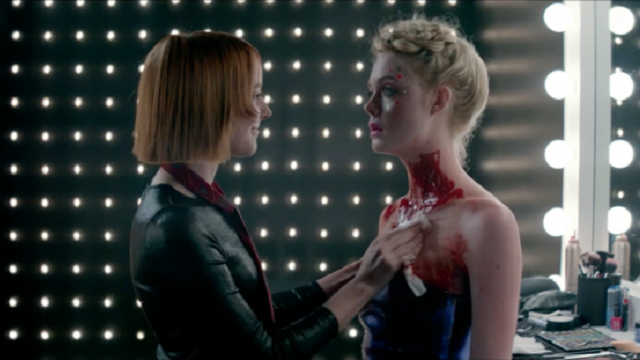Back in the days of VHS, movies were cropped to fit the 4:3 television screen. You had a square screen, and a rectangle image. Sometimes the crop was subtle, and other times it completely destroyed the screen composition. In Ghostbusters, when they enter the hotel where they meet Slimer, they walk in four abreast. On the DVD commentary, Harold Ramis (Egon) made a point of saying that in the television versions, he was completely cut out of the frame. Other movies, where two people are sitting on opposite sides of a frame and talking, the VHS would either pan between the two characters or add edits; effectively changing the rhythm.
Watching movies on the television back in those days destroyed movie experiences. Back when a 26″ television was relatively big, cinematic experiences were scaled down and details were lost. It was years before I saw Johnny Depp’s cocaine nostrils in Fear and Loathing in Las Vegas. But, worse than losing miniscule details was losing the big screen atmosphere by the immensity of the image.
I saw Halloween multiple times on VHS and wondered what all the fuss was about. It was cropped in a Pan and Scan, losing all the inky blackness Carpenter built into the frames. When I saw it in a theater, the immensity of the darkness that overwhelms the theater and engulfs the audience, has as much an effect of creeping dread as its famous score. David Lynch’s films lost their carefully crafted framing (Blue Velvet) as well as the sheer scale of the experience (Eraserhead). And, Dario Argento’s Suspiria was reduced from a grand guignol emotionally wrought experience into a confusing underdeveloped and underplotted movie with some cool colors.
Not all movies benefit from a movie theater. Small dramas tend to play just as well in an intimate experience as on a gigantic screen (unless you tend to be distracted by your gadgets at home, and you know who you are). Modern indie dramas are designed to be streamed, knowing that half their audience is going to be sitting at home watching on their laptop or television instead of in the movie theater. Heck, even a horror movie like The Den or Unfriended play better on a television or laptop where it breaks down the distance between the camera and the screen.
Even today, there are big movies that play better on a big screen. Gravity, The Neon Demon, The Strange Color of Your Body’s Tears, The Hateful Eight all benefit from a large experience where the immensity of the image swallows the audience. These films all become a lesser experience on the television, prone to being nitpicked to death. There’s something about having a larger-than-life screen dominate your field of vision and demand your attention for however long its on screen. It’s a transformative experience.
What are your big screen movies? Has there been a movie that was roundly applauded in theaters that seems to have lost its luster on a small screen? What movies work equally well on small screens as on big screens?

